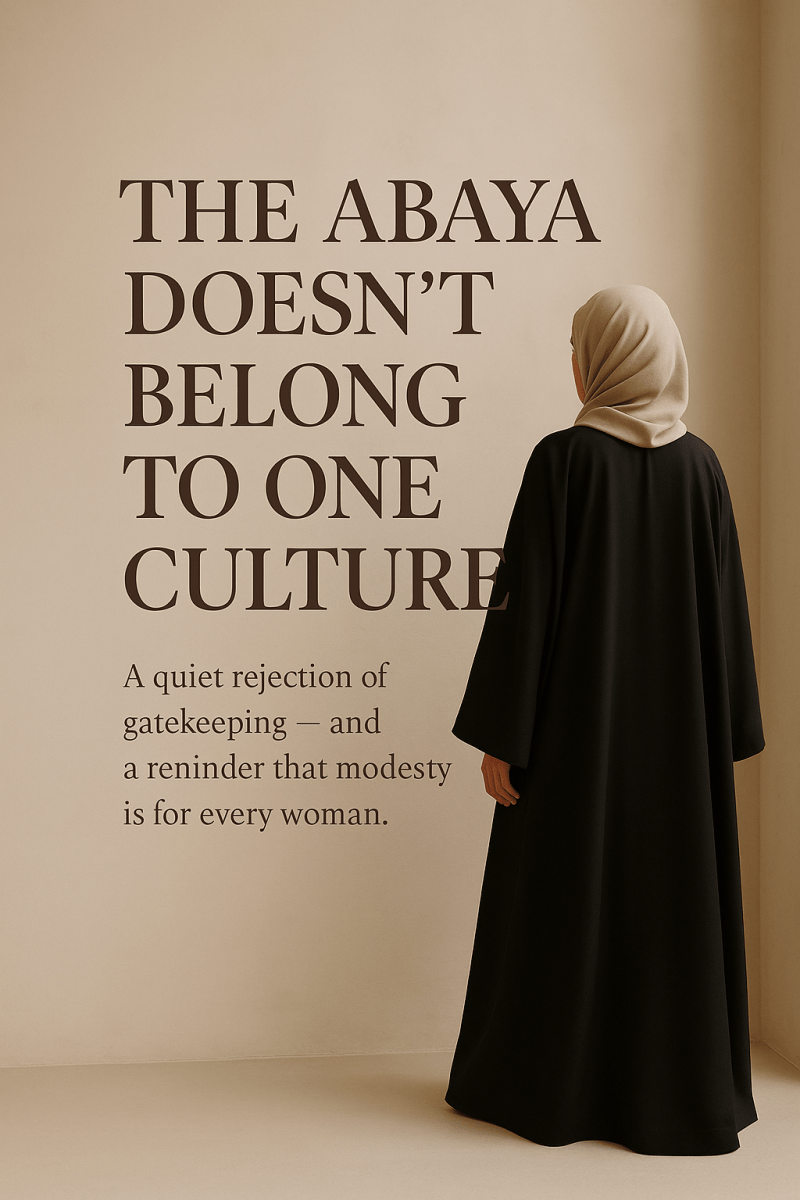
You’ve seen the comments.
“Only Arabs should wear abayas.”
“That’s not religious. It’s cultural.”
“Wear your own clothes.”
If you’ve ever worn an abaya and you’re not Arab, you’ve likely felt it. The stares. The judgment. The pressure to explain yourself.
But modesty doesn’t belong to one culture. The abaya doesn’t come with rules about who gets to wear it.
This isn’t about trends. It’s about identity, dignity, and the freedom to dress in a way that reflects both.
In this piece, we’re talking about where the abaya comes from, why the criticism misses the point, and how we see things at Norah Collections.

The Origins of the Abaya
The abaya started in the Arabian Peninsula. It was worn for protection — from the sun, the heat, and public view. It was long, loose, and practical. It was cultural.
But culture doesn’t stay in one place.
As Islam spread, so did modest dressing. Across countries and continents, Muslim women embraced different styles to reflect their faith.
Shalwar kameez in South Asia. Jilbabs across North and East Africa. Long coats in Turkey.
And yes, abayas too — picked up by women who saw in them something that felt right.
It wasn’t about copying. It was about choosing.
Today, the abaya is no longer just Arab. It’s worn by women from all backgrounds — as a symbol of identity, modesty, and confidence.
You don’t need to be Arab to wear one.
You just need to know what it means. And why it matters to you.

Is Wearing an Abaya Cultural Appropriation?
This question comes up often, especially online. But most of the time, it’s rooted in confusion. People mix up cultural appreciation with cultural appropriation.
Appropriation is when something is taken without care, stripped of its meaning, or used for attention. It often turns culture into a costume.
That’s not what happens when a Muslim woman chooses to wear an abaya. When it’s worn as a reflection of modesty, identity, or faith, it isn’t copying. It’s alignment.
The abaya may have come from Arab culture, but it no longer belongs to one group. Like Islam itself, it has reached people across languages, borders, and backgrounds.
You don’t need to claim someone else’s identity to wear an abaya. You just need to feel at home in what it represents.
Modest Fashion Isn’t a Closed Club
The criticism doesn’t always come from outside. Sometimes it’s within the Muslim community.
A look. A comment. The suggestion that a certain style only “belongs” to certain people.
But modesty isn’t exclusive. It isn’t a trend, and it isn’t a membership.
What one woman wears to feel covered and confident might look different from another. Some wear abayas. Others prefer long skirts, loose trousers, or layered outfits. It depends on their culture, comfort, and values.
No one style defines what it means to dress modestly. And no single group owns it.
If a woman wears an abaya with the intention to honor her faith and identity, that’s enough. No one else gets to decide whether her choice is valid.
Modesty isn’t something to guard. It’s something to share.
What Matters Most: Intention and Modesty
At the heart of this conversation is something deeper than fashion or culture. It's intention.
Why someone chooses to wear an abaya matters more than where they come from or what others expect. The purpose behind modesty is rooted in sincerity. Not in meeting someone else's standard.
Modesty in Islam was never meant to look one specific way. It’s a principle. Not a uniform.
Some women wear black abayas every day. Others wear long dresses, layered sets, or traditional clothes from their culture. The shape changes, but the meaning remains.
And that meaning comes from within. Not from outside opinions. Not from a comment section.
When a woman dresses with the intention to honor her values, that decision stands on its own. It doesn’t need permission.
Faith doesn’t ask you to dress like someone else. It asks you to dress with intention.
How We See It at Norah Collections
We’ve seen abayas worn by women from every background. Each woman brings something of herself into the way she wears it.
Some wear them daily. Others keep them for prayer or gatherings. Some come from cultures where abayas were never common. Others grew up with them. Each experience is different, and each one is valid.
At Norah Collections, we don’t believe modesty has one definition. We see it as something personal. It’s shaped by values, not by pressure.
That’s why we create pieces for women who want to dress with purpose. Not to impress. Not to follow. Just to be true to who they are.
If the abaya reflects your intention, you already belong in it.


